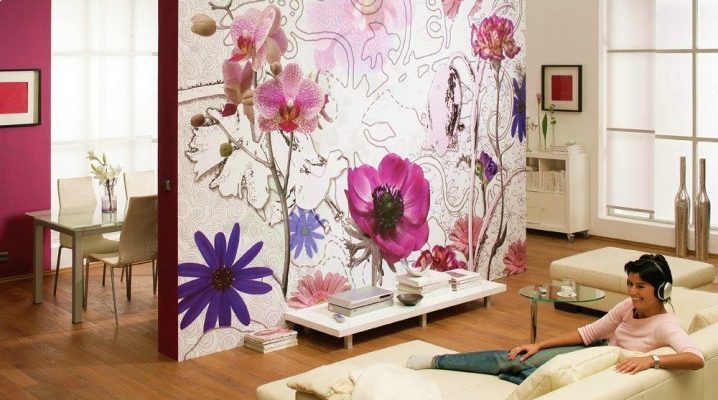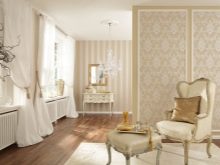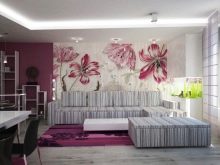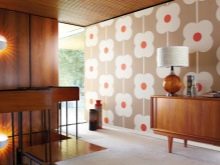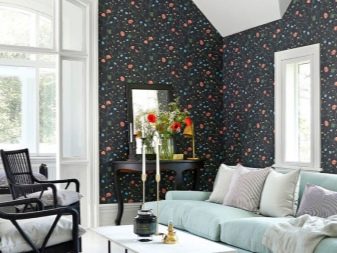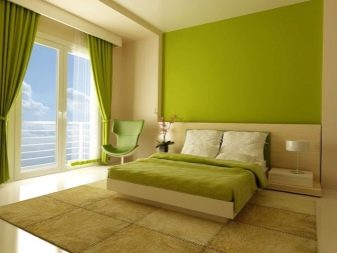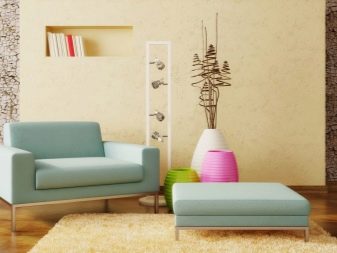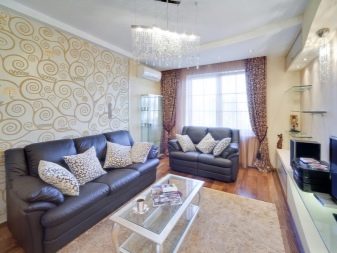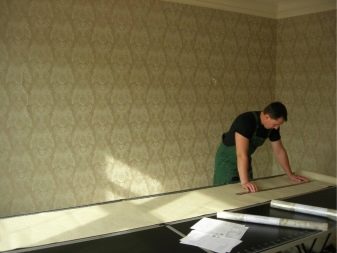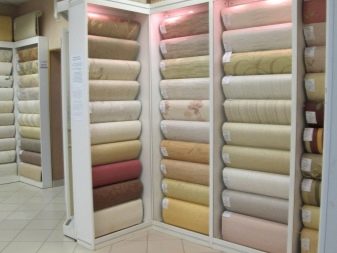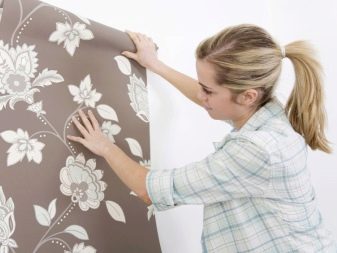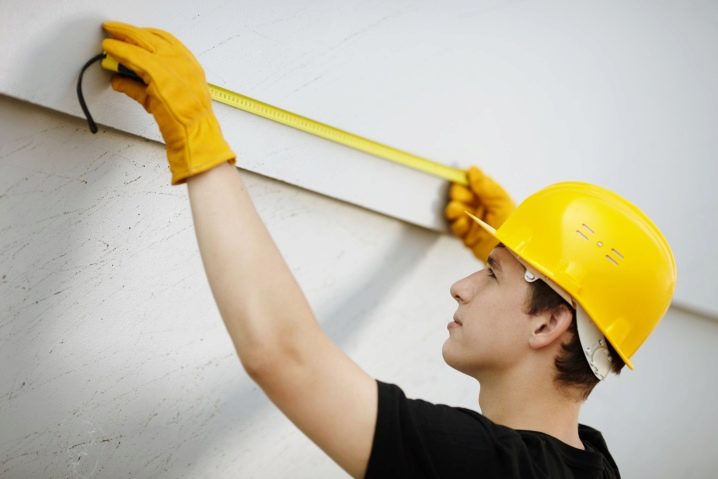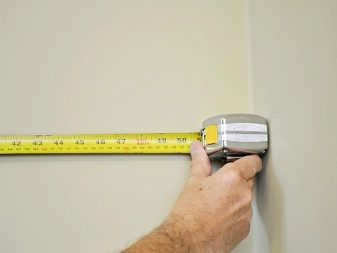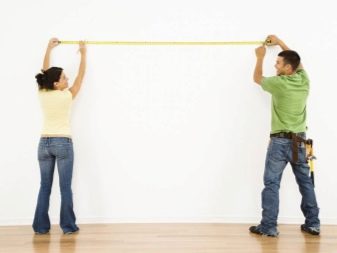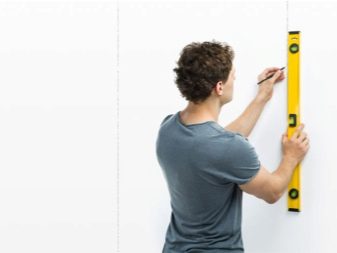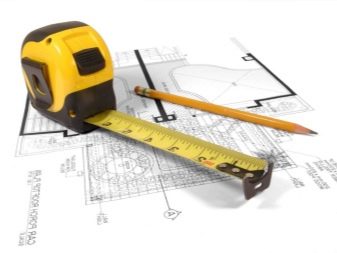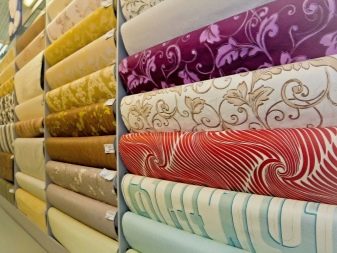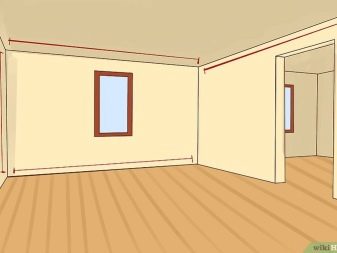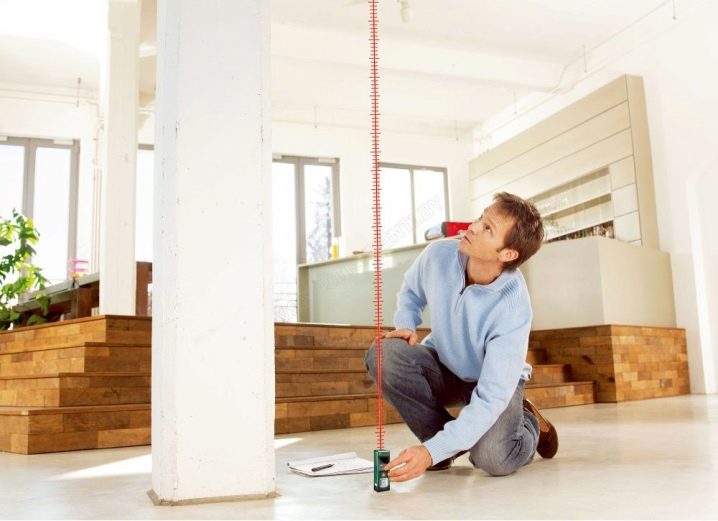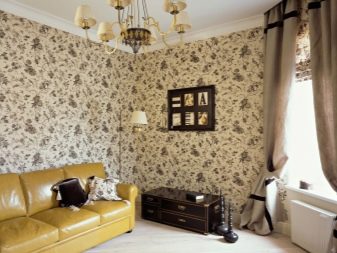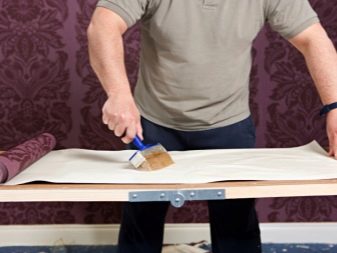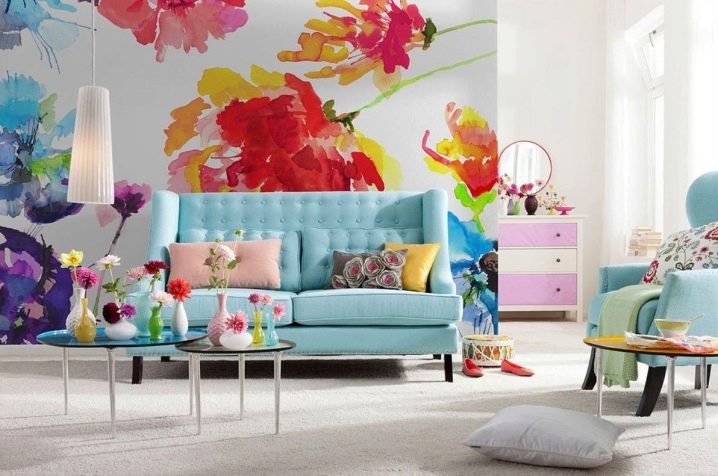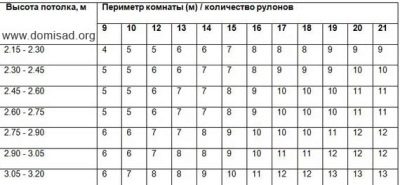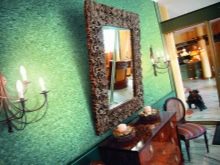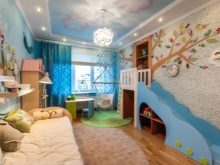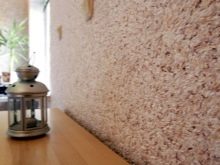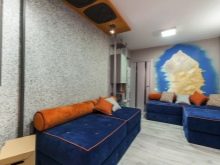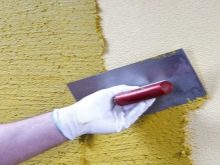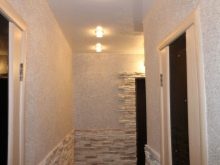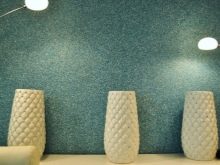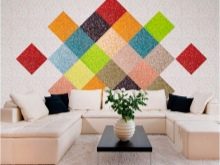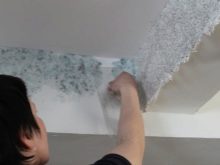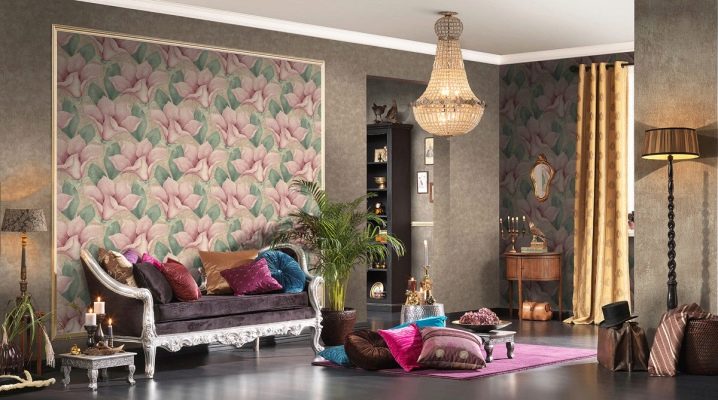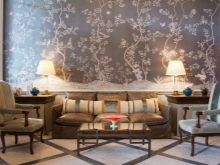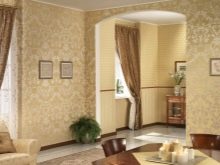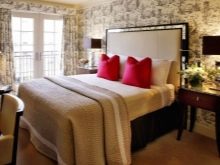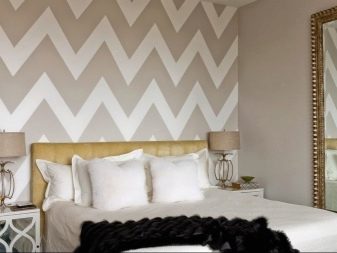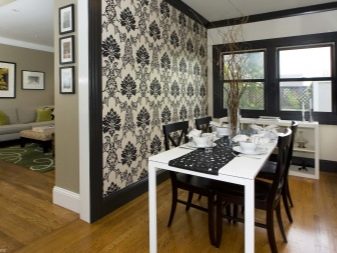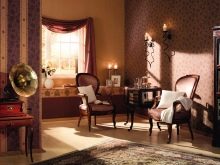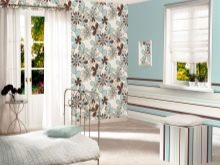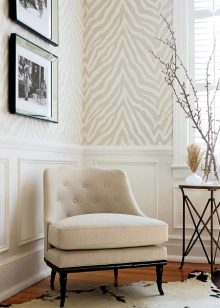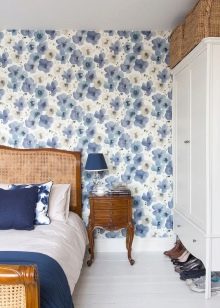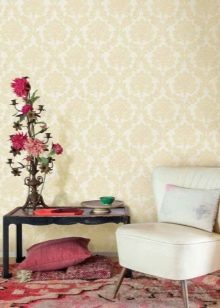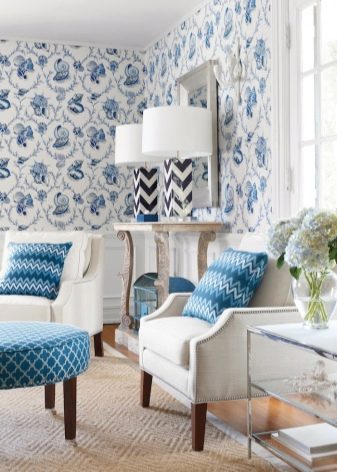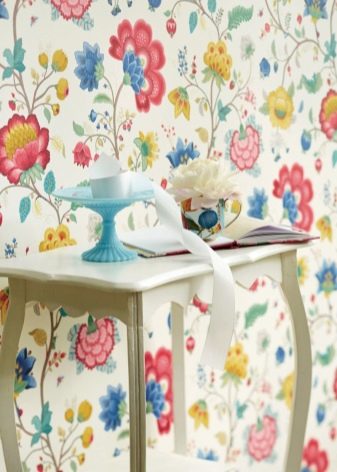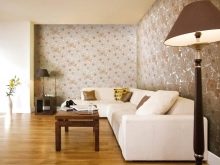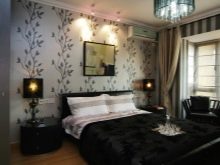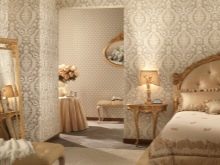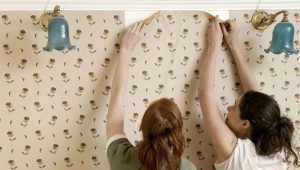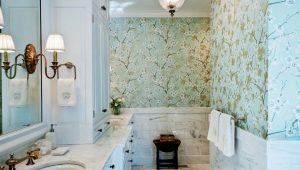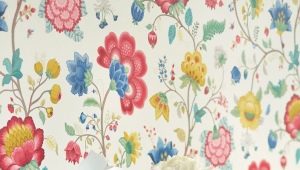How to calculate the amount of wallpaper per room?
Wall cladding requires care and careful preparation. It is important to correctly determine the amount of material needed, so that it is enough for finishing vertical planes and you do not have to finish finishing with residues or buy a roll that may not match the tone of the existing wallpaper. Calculate the number of wallpapers on a room is not as difficult as it may seem at first glance.
Where to begin?
Wallpapers presented for sale by trademarks have different lengths and widths. They can be rolled or packaged type, have a drawing or embossed texture. In each case, the parameters of the wallpaper, the fit of the pattern, the features of the vertical surfaces, the height of the ceiling matter. In addition, you will need to measure the dimensions of the door and window openings: this eliminates the area that does not need pasting.
If the layout of the room provides for the presence of projections, arches, niches or panels, it is also necessary to measure, determining the need for finishing materials. It may seem that it is easier to read the amount of wallpaper on the old coating, but the pattern of new canvases will be completely different, therefore do not expect that the flow will be identical.
If during the pasting it is planned to emphasize the ceiling with wallpaper, it is necessary to determine the parameters of the area of gluing, using a building tape measure. In any case, the perimeter of the room is initially measured, checking each indicator twice and recording the data in a schematic drawing of the wall design: it is easier to imagine the future decor of the walls and pick up the least amount of lining minus unworked surfaces.
Measurements carried out from the ceiling and to the level of the floor, not throwing back the allowance for the floor plinth. Since the walls in most cases have a curvature, you need to hold them in several areas, choosing to mark the highest figure.
It is important not to forget that the greater curvature of the walls can cause the use of horizontal pasting, and this is a different material calculation.
Roll sizes
To date, the attention of buyers are different settings wallpaper. By virtue of the composition, the decor, the mode of production, they can have different parameters: thus, manufacturers provide for simplicity and convenience of pasting, minimizing the number of joints. At the same time, demanded materials are wall coverings of greater width and length, which is indicated on each material, having a minimum error and corresponding to existing standards.
These data are entered into online calculators, through which you can find out the necessary amount of raw materials in the store. Today, the width of the rolled wallpaper is 53, 60, 74, 106, 120, 150 cm. The length of the rolls is no less varied: depending on the specific type of material used to create the canvas, it can be 5, 8, 10 (10.05), 12, 15, 18, 20, 25 m.
The larger indicator is especially convenient in that if there is a pattern in the wallpaper, it is not necessary to glue the walls with remnants, pasting the missing fragments with fitting the print to its full length. The most popular lining options are wallpapers with dimensions:
- 53x105 cm is the optimal variant of the material, convenient when pasting for a beginner or in places with protrusions, corners;
- 106x105 cm - a common size used by craftsmen, which accelerates the lining;
- 74x100 cm - European size, which is the golden mean between the first two, convenient for working alone.
In addition, the thickness of the wallpaper matters. For example, thin varieties are able to shrink after glue is applied to their backs. Dense materials can vary in length, so a small stock of material is required for each strip to align the top and bottom of the cloth. It is added to the calculation or to each strip (about 5 cm).
You can not take wallpaper butt: sometimes a scrap or incorrectly cut fragment is possible in the work, which should be laid at least in small remnants from each roll or in one large one footage.
Remnants can be used to finish short sections of walls (for example, over windows or a doorway).
Calculation methods
Calculate wallpaper for facing the room correctly in several ways, which depend on the number of walls. In some cases, the planes are lined with panels, laminate, and they are often laid out with bricks, stones, tiles, and decorative plaster. The number of rolls can be calculated by the formula, knowing the perimeter of the walls, using the area, by drawing or accent zones.Consider the options when facing the walls with wallpaper is carried out on 4 walls, choosing to finish wallpaper with a length of 10 m with a width of 53 and 106 cm.
Around the perimeter
The easiest way to find out the required number of wall cladding around the perimeter of the surfaces to be glued. This means that you need to measure the length of each side, taking into account possible discrepancies on the curvature of the walls or measuring the two sides, multiplying the result by two. In other words, first add up the sum of the lengths of all sides. For example, if the larger figures are 4 m, the smaller ones are 3 m, the formula looks like this: 4 + 3 + 4 + 3 or (4 + 3) x2 = 14 m.
Having learned the perimeter of the room, measure the height of the walls. This will let you know how many strips of material will come out of one roll. For this, the roll length is divided by the height of the walls: if, for example, this indicator is 2.7 m, the length is 10 m, the number of lanes is found as follows: 10: 2.7 = 3.703 (3 full bands and a remainder equal to about 1.9 m). It remains to calculate how many rolls of a certain type are needed in order to have enough wallpaper on the walls to be processed. For this, the perimeter of the room to be glued is divided by the width of the roll: in our case 14: 0.53 = 21.415 or 14: 1.06 = 13.2 (rounding, we get 22 strips with a narrow width and 14 strips - with a wide one).Then it remains to calculate the number of rolls: the consumption is equal to the total number of lanes divided by the number of lanes in a roll: 22: 3 = 7.3 (8 rolls) or 14: 3 = 4.6 (rounded to 5).
By area
There is an equally accurate method of counting wallpaper for pasting, based on the area of the room to be pasted, if the material is pasted over the entire room. To make the measurement accuracy as accurate as possible, it is worth measuring the total room footage: measuring the length, width and height of walls in several places on each wall, revealing the highest indicator of a building tape measure. Having recognized the large measurements of length and width, they fold their metric area, multiply by two (two large and two smaller walls), then multiply by height. For example, if the length of the walls is 4 m, the width is 2 m, the height is 2.5 m, we find the area by the formula: ((4 + 2) x2) x2.5 = 12x2.5 = 30 square meters. m
In other words, the area of the glued surface is 30 square meters.
Now you need to calculate how much wall area will close 1 roll. To do this, you need to multiply the length of the roll by its width. For example, with a width of 53 cm and a length of 10 m, we obtain: 10x0.53 = 5.3 square meters. m. Using a wide meter wallpaper, the area will be larger: 10x1.06 = 10.6 square meters. m
In order to calculate how much you need to buy rolls of finishing wallpaper for walls, it will be necessary to divide the surface area indicator by the roll area parameter: 30 square meters. m: 5 square meters. m (rounded 5.3 from one roll) = 6 rolls with a width of 53 cm. The number of wide wallpapers will need less: 30: 10 = 3 rolls. The calculation of this method gives identical results, as if the measurements were carried out around the perimeter.
With an image
The number of plain wallpaper count easier, but varieties with a pattern require a different approach. The fact is that each print is different in the length of the repeat, which affects each strip and often increases the flow from one banner to 40 cm or more. If the calculation of the previous wallpaper can be done at home, in this case you will have to find out the expense directly on the spot (in the store). The disadvantage of this method is the fact that often near rapport wallpaper is not always visible, therefore, in case of inattentive calculations, you can make a mistake. Initially, you need to deploy a strip of wallpaper and move at least two meters: it will be better to see where the rapport ends.
The disadvantages of wallpaper with print is the mass of residues.Moreover, in the process of working with corners, there may be discrepancies in the pattern due to the curvature of the walls and the difference in their height, and it is far from always possible to combine the pattern of the panels as accurately as possible. It is important to carry out pasting extremely carefully, combining each element of the picture, not pulling and not wallpapering. In this case, the key indicator of the calculations is the individual pattern repeat. As a rule, it is smaller in versions with a floral print than in products with monograms and geometric figures. Usually, when buying wallpaper with a print, the consumption of finishing material increases by about 2 rolls.
Sometimes manufacturers indicate the amount of rapport or fit on the information label of each roll. This simplifies the calculations of the material with the fit, which can be carried out on the basis of the first two methods: on the perimeter or on the area (as in the calculations of monochromatic varieties). However, the key difference is fitting: it can shift by the size of the whole rapport or half of it.
In such cases, the pictogram (schematic illustration) of the product label indicates a fractional number, the numerator of which indicates the size of the whole rapport, the denominator determines the pattern offset (for example, 53 / 26.5 cm).
In this case, when calculating finished lengths of canvases, it is important to add the length of the rapport to the length of the strip.
Table
If the calculations baffle, you can use the finished table, which will indicate how many rolls will be needed for facing the walls at different ceiling heights and perimeter of the room. It contains approximate data, so when finishing it is important to add small allowances to each strip to eliminate the formation of gaps. In this case, it makes sense not to cut all the wallpaper at once into strips of the same length: often the upper edge of the wallpaper with a pattern or relief texture differs by several mm, which is due to the curvature of the walls. You should not cut more than one strip at once, scheduling a second cut: It is better to cut the upper section of the cloth when the first one is glued, than to finish gluing the missing millimeters, or by stretching the side edge so that the pattern coincides.
When drying the material can skew, which will spoil the perfect monolithic look of the wall covering. After looking at the table data, the required amount is determined by the height of the ceiling and the perimeter of the room. Please note that these heights differ by 15 cm: this means that it is not advisable to take the material abutting, you need a small margin.Often, repair is not done immediately after purchase, it will not be easy to pick up the wallpaper you need afterwards, because each batch is different in color and pattern.
Liquid coatings
Liquid wallpaper are packaged facing material, it is a kind of alternative to roll analogues, which is inherent in seamless technology. This finish has three varieties (cellulose, silk and silk-cellulose), each of which has its own nuances and volume. Liquid wallpaper sold in packagings weighing 1 kg in two variations: on the basis of powder, similar to sawdust with glue impregnation, and a thick mixture, ready to use, for which the latter were called "wet wallpaper." Diluted with water, the material is a pasty mass, which is applied to the surface of the walls being treated like decorative plaster.
Liquid wallpaper smeared on the wall with a spatula, roll construction roller, spray a special gun. In each case, the material consumption is different, because the thickness of the cladding layer itself varies, which can be from 2 to 6 mm.
Typically, each brand indicates the approximate consumption of material on the packaging of liquid wallpaper.Approximate rate of consumption per 1 square. m is equal to 0.3 kg of thick mass or powder. It turns out that one package weighing 1 kg is enough for 3.3 square meters. m. working surface. Often, in order for this consumption to meet the real needs of the finishing material, manufacturers add another 10% of raw materials to the mass of the package.
Often on the Internet you can find opinions that The consumption of liquid wallpaper is much more economical than this. Indeed, using a spray gun with a large nozzle, it will leave less. The use of a roller will also reduce the amount of raw materials needed. However, you should not expect that it will be required in half as much: savings on thickness will lead to the fact that the walls will shine through, the mass will be applied unevenly, which will spoil the look of the whole interior. In general, if you need to properly paste a room with a meter of 18 m, minus window and door openings, it is worth the weight of a mass per 1 square meter. m multiplied by the number of required squares facing.
In other words, 18x0.3 = 5.4 kg or 6 packs when rounding.
You should not worry that the remains of facing can be gone. Firstly, there will not be many of them, since the material is bulky and when performing finishing works, marriage is not excluded.Secondly, the remnants can be dried in the open air, then put into a clean bag and stored until the time of adjustment up to several years. They will not disappear, but in case of replacing the problematic contaminated area they will allow to avoid completely removing the wallpaper from the surface of the walls, extending their life.
Small area
Do not forget that the above calculations relate to the lining of areas excluding window projections and doorways. This means that when calculating the amount of wallpaper material, it is necessary to subtract the dimensions of the unworked areas. To do this, first determine the perimeter of the entire room, read the width of the openings (windows), divide the resulting value by the width of the roll of wallpaper, then round the result (this is the number of panels).
After that, it will be necessary to divide the roll length indicator by the height of the ceiling (the number of strips from 1 roll) and divide the required number of strips by the number of panels in one roll.
The amount of material may be reduced if you plan to partially wall the wall or emphasize the protrusion. For example, to highlight the same level of the wall, it may be necessary to emphasize one or two strips of rolled varieties or to make a panel or the back of a rack using liquid wallpaper.
In such cases, you can use a pencil and designate an approximate area: this will allow you to determine the consumption of a specific accent material. As a rule, if a fragment of the wall is small, 1 packet of liquid wallpaper and 1 roll of meter varieties are sufficient. However, if the accent zone is large, it is planned to execute the drawings with liquid wallpaper, it makes sense to purchase material with a margin, based on an approximate calculation per wall by area minus the unworked surface. If it is a roll wallpaper for one wall, you can count the number of strips according to the picture, then correlate them with the wallpaper area.
Recommendations
The calculations made are approximate: remember that a room can have non-standard design features that need to be put into the formula. For example, this may be a protrusion (three protruding faces are added), a panel (the length and width of the facade is removed), a bay window (the number of additional faces is taken into account).
If the apartment has a triangular wall, measurements are carried out as for ordinary rectangular (the length is multiplied by the height).
If, when finishing in some places, the facing material moves to the ceiling, it is important to measure the parameters of the working surface, taking into account the figured or straight lines conceived by the design of the facing.Choosing the finish for the walls, taking into account the wall covering and decoration of furniture, measure the desired facades. If you plan to buy wallpaper with a pattern, you can use for these purposes the remnants of strips, the length of which is not enough for the whole distance from floor to ceiling. Study the information on the packaging of rolls: often there is indicated an indicator of the area, which, according to the manufacturer, you can paste over with this material for 1 roll.
Don't forget that These calculations are true, if the walls of the room are relatively even, and the texture of the material is small. If horizontal pasting of walls is foreseen, the calculation will be different. In this case, the distance from one edge of the wall to another is used as the length of each panel, taking into account the transition of the panel to the adjacent plane of about 2 to 4 cm. If the walls are noticeable curves, you can add another 2 cm to this allowance
However, it is worth considering that it will have to be cut in the process of pasting: the wallpaper in the corners is glued with an overlap with a slight overlap. If the transition is more than 2 cm, it will be noticeable that it visually looks ugly.Moreover, with a broken perspective, it will be more difficult to measure the length of the transverse webs, taking into account projections or different levels, than when performing conventional vertical measurements. In order not to suffer in this situation, you can choose a paired wallpaper for the decoration of the projections, overlaying the design features of the room with them in the usual way (vertically).
By doing this, It is important to take care that the decoration used two types of wallpaper: with a pattern and plain. It is worth starting from considerations of practicality and simplicity of lining. In this case, the protrusions and other features are easier to glue over the material without a pattern: the curvature of the walls will not be noticeable, it is easier to combine the edges, closing them, if necessary, with moldings or baguette. In this case, the main level of the walls can be glued parallel to the floor.
Combining helps out, if the print is large enough, it helps to save on finishing, while not losing in the external and practical characteristics of the wallpaper.
Some varieties are bought for wall decoration on top of basic wallpaper or for creating patchwork technique in bright design styles by gluing pre-cut square or rectangular small-sized wallpaper fragments onto an accent wall. In these cases material consumption will be more, because such methods involve the use of a small amount of material in the decoration. Therefore, there will be a lot of leftovers.
To avoid unnecessary waste, you can use the remnants of the wallpaper after repairing other rooms to finish a small section of the wall of the room, if the color and design of the material coincides with the style and shades conceived. If the raw material is not suitable, it is preferable to buy wallpaper, choosing a picture in the right size, or ordering photo printing in the right theme and color scheme for specific measurements. So there will be no remnants, and the atmosphere of the interior will be as planned.
Top materials
Finally, it is worth mentioning several long-lasting varieties of wallpaper that will decorate the interior of any room, will not complicate the workflow, emphasize the delicate taste of the apartment owners, will look beautiful and allow you to save on finishing, minimizing the possibility of marriage of finishing work. These include:
- non-woven linen - environmental wallpaper of meter width, not emitting harmful substances into the air, practical and beautiful canvas, convenient in pasting;
- Textile - advanced premium wallpaper for sticking by experienced craftsmen that do not need to be treated with the adhesive on the back of the material;
- silk screening - options with embossed on vinyl-based, double-layer wallpaper with the appearance of silk textiles;
- glass wall paper - a material that is created on a loom, giving it a clear fixed shape through additional impregnations;
- for painting - plain wallpaper on paper, non-woven and glass-based, characterized by a minimum consumption of facing material and the presence of textured surface.
Of these, the minimum consumption will be in varieties for painting and liquid wallpaper. They do not need to fit the picture. These materials include glass fiber, which allows the surface to be painted up to 20 times.
Learn more about how to calculate the number of wallpapers per room, you will learn from the following video.
